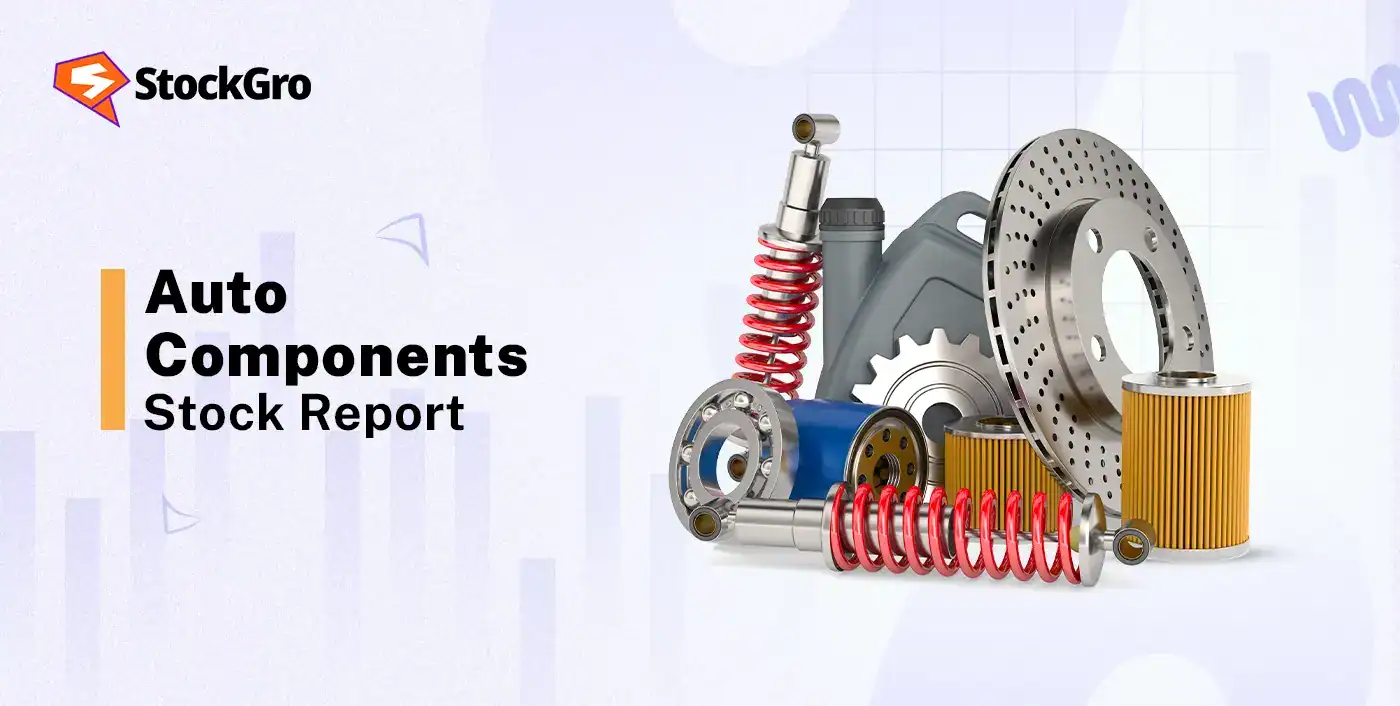
Auto Components Sector Overview
The auto components sector makes the parts that go into cars, two-wheelers, commercial vehicles, tractors and off-highway machines. This includes everything from nuts & bolts to engines, transmissions, electronic modules, wiring harnesses, braking systems, tyres, and software/ECUs. The sector is the backbone of the auto industry, provides a big chunk of manufacturing employment, and earns large export revenues. It’s also where technology shifts (electric vehicles, ADAS, connectivity) and supply-chain changes play out first.
Structure of the Auto Components Industry
Tier-1 suppliers: Direct suppliers to OEMs (original equipment manufacturers). They deliver complex systems (brakes, fuel systems, infotainment, ECUs) and often co-develop parts with OEMs.
Tier-2 & Tier-3 suppliers: Make sub-assemblies, components, raw materials and simpler parts (moulded plastics, fasteners, brackets). They supply Tier-1s or OEMs directly for smaller parts.
Aftermarket players: Provide replacement parts, spares, and accessories to service channels and end customers. This segment is less cyclical and often higher margin for branded specialists.
Specialised technology suppliers: Companies focused on electronics, sensors, batteries, motors, power electronics and software which is key for EVs and ADAS.
OEM captive units: Some carmakers have in-house component units competing with independents.
Key Demand Drivers
- Vehicle production: The single biggest driver — passenger vehicles, two-wheelers, commercial vehicles and tractors. More vehicle manufacturing → more parts demand.
- Electric vehicles (EV) adoption: EVs use different parts (motors, inverters, battery packs) and fewer mechanical parts (no clutch, simpler transmissions). This shifts demand from mechanical to electrical/electronic components.
- Replacement market & vehicle parc growth: As the on-road vehicle fleet grows and ages, demand for spares and service parts rises steadily.
- Technology upgrades: Safety (ABS, airbags), infotainment, connectivity and ADAS (sensors, cameras) increase the content value per vehicle.
- Exports & global sourcing: Global OEMs source parts from India; rising exports increase demand and scale.
- Localization pushes: OEMs and governments push local sourcing to cut costs, reduce import dependence and support exports.
- Infrastructure & commercial activity: Growth in freight, buses and construction equipment supports CV and off-highway component demand.
Structural trends reshaping the industry
- Electrification: Battery packs, motors, power electronics, battery management systems now matter. This creates winners among specialists (cells excluded) and changes supplier mix.
- Electronic & software content rise: More ECUs, sensors, wiring harness complexity and over-the-air updates increase the software-hardware mix.
- Lightweighting & materials shift: Use of aluminium, composites and high-strength steels to improve fuel efficiency and range for EVs.
- Modular platforms & common architectures: OEMs standardize platforms, increasing volumes for certain components but reducing variety.
- Supply-chain reconfiguration: Near-sourcing, multi-sourcing and vendor diversification after supply shocks. Inventory strategies shift from “just-in-time” to more resilient models.
- Aftermarket growth & organised retail: Better parts availability, branded fitment centres and e-commerce are professionalizing the aftermarket.
- Consolidation & global M&A: Bigger suppliers acquire niche tech firms; scale and global reach become competitive advantages.
- Sustainability & recycling: Battery recycling, lower carbon manufacturing and green inputs are rising priorities.
Profit drivers & cost structure
- Content per vehicle (CVP): The higher the parts value per vehicle, the higher supplier revenue for the same volumes. Tech upgrades and premiumisation raise CVP.
- Volume scale & utilisation: Fixed costs spread over higher volumes — utilisation is critical. Low volumes compress margins.
- Raw material & commodity costs: Steel, aluminium, copper, plastics and electronic chips affect input cost. Commodity swings directly change margins if not passed on.
- Value-add & engineering services: Design, R&D and co-development fees fetch better margins than plain manufacturing.
- Operational efficiency: Automation, lean manufacturing, local sourcing and logistics reduce cost per unit.
Major risks & regulatory points
- Automotive cycles: Components follow vehicle production cycles. A slowdown in auto sales sharply reduces revenues.
- Technology disruption risk: Rapid shift to EVs may make certain legacy product lines obsolete (e.g., starters, clutches).
- Chip & supply shortages: Semiconductor availability can halt production; dependence on a few chip suppliers is risky.
- Commodity price volatility: Sharp raw material inflation compresses margins if price pass-through is slow.
- Customer concentration: Heavy dependence on one or two OEMs for revenue is risky.
- Working capital stress: OEM payment terms and long receivable cycles strain liquidity for smaller suppliers.
- Regulatory & trade risk: Sudden policy moves on duties, localisation, or environmental rules can disrupt plans.
- Quality & recall risk: A faulty part can cause large warranty costs and reputational damage.
Practical financial metrics & what to track every quarter
- Revenue growth by segment (OEM vs aftermarket; domestic vs export).
- Content Value per Vehicle (CVP) / Average realisation per vehicle: indicates value capture.
- Order book & new contracts: Visibility into future volumes.
- Capacity utilisation (%) and plant throughput.
- Gross margin & EBITDA margin (trend & commodity impact).
- Net working capital days: inventory, receivables, payables.
- Net debt / EBITDA & interest coverage.
- R&D / engineering spend (% of sales) and number of joint development projects.
- Export percentage & forex hedging policy.
- Warranty & field failure costs (% of sales).
Valuation and Stock Market Trends
| Company | CMP(in ₹) | P/E | RoCE | 1Y Returns |
| Bosch | 38,585 | 51x | 21% | 7% |
| Samvardhan Motherson | 106 | 33x | 14% | -16% |
| Uno Minda | 1,192 | 66x | 19% | 28% |
| Bharat Forge | 1,283 | 59x | 12% | -6% |
Sector Outlook
- Short term (12 months): The sector will track vehicle production trends. Expect volatility as macro & commodity factors play out. Suppliers with diversified channels (aftermarket, exports) and those supplying to resilient CV/tractor segments will do better. Chip availability and logistics costs will remain watchpoints.
- Medium term (3–5 years): Structural shift toward electrification and connected vehicles will raise electronic & software content per vehicle. Suppliers investing early in EV powertrain, BMS, motors and power electronics should see structural growth. Aftermarket and exports will remain steady pillars. Consolidation and M&A will pick up as larger players buy capabilities.
Conclusion
The auto components sector is undergoing a major transformation — from mechanical to electrical and software-driven content. This creates winners (suppliers who move up the value chain and embrace EV/ electronics) and losers (those dependent on legacy powertrain parts). For investors, focus on balance-sheet strength, customer diversification, R&D/engineering capability and early exposure to EV and export opportunities. Discipline, scenario planning and active monitoring of KPIs separate smart bets from risky ones.
If you found this helpful and want regular stock trade calls, check out my StockGro profile here: https://stockgro.onelink.me/vNON/6m6ykj0d
